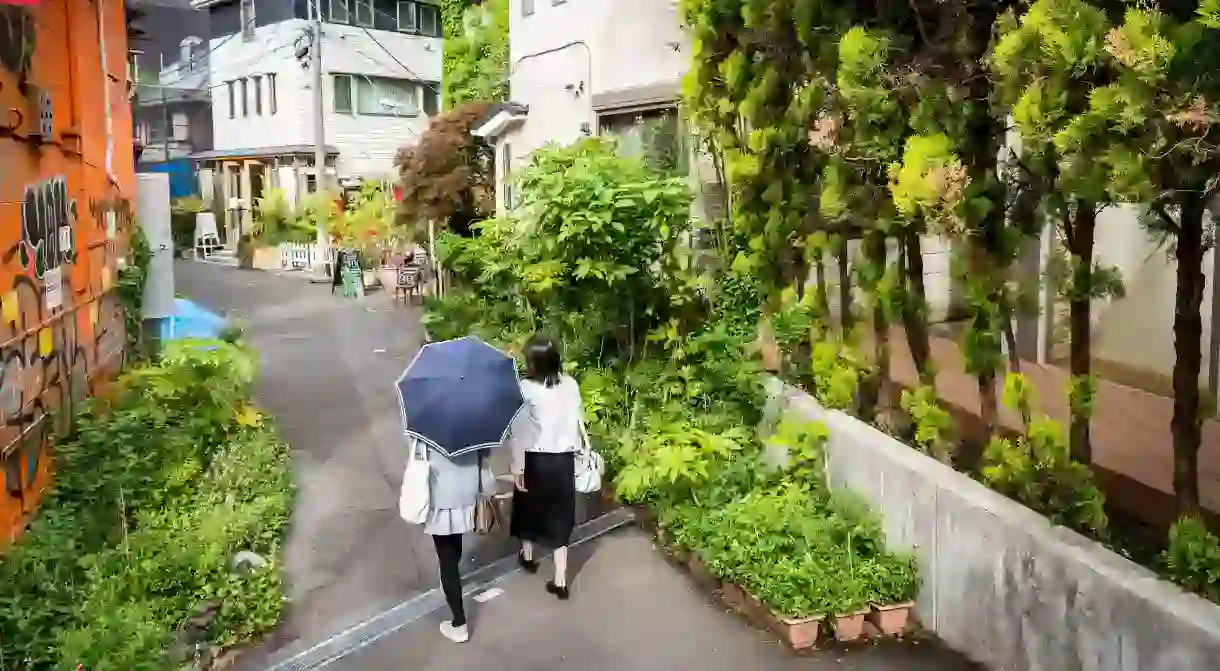A Walking Tour of Harajuku, Tokyo

Harajuku is Tokyo’s hub for youth culture and fashion, often conjuring images of local teenagers dressed to impress in anime, goth and cosplay outfits. Although there might be more tourists than teens there these days, there are still plenty of local curiosities to discover, so take to Harajuku’s quirky streets with this Culture Trip guide.
Start at Harajuku Station
Train Station

Harajuku Station is a charming wooden structure built in 1924, long considered a landmark in the area. Unfortunately, to meet the needs of an ever-increasing number of commuters, the station is being rebuilt ahead of the Tokyo 2020 Olympic Games, so catch the current building before it’s replaced with a modern glass edifice. From here, head right to the bridge where all the cool kids used to hang out – you may still be lucky enough to spot some. Cross the bridge if you want to check out the famous Shinto shrine Meiji Jingu before heading to Harajuku proper, as it lies right behind Harajuku Station.
Discover Harajuku’s fashion hub on Takeshita Dori

Harajuku has gone through a number of changes in the last few years, and none are more visible than on the area’s most famous street: Takeshita Dori. This long shopping strip is a huge draw for locals and visitors alike, and is well worth a stroll if you can handle the crowds. Here, you’ll find everything from Tokyo fashion favourites to K-pop star fan stores and dozens of Instagrammable cafés. Totti Candy Factory serves up huge rainbow cotton-candy cones, while Marion Crepes is hailed as one of the original pioneers of Harajuku crepes. Noa Café is the oldest café on the street: it opened in 1970 and is still going strong. If you’re more into fashion, check out Cute Cube, which houses various stores with irresistibly kawaii items, or Harajuku Alta, a smaller version of the Shinjuku staple.
Sidestep the crowds at Tōgō Shrine
Shinto Shrine

If throngs of people aren’t your thing, slip down the narrow backstreet running parallel to Takeshita Dori, which hides an unlikely resident: the Tōgō Shrine. Built in 1940, it is dedicated to Admiral Heihachiro Togo, known for his heroism in the Russo-Japanese war. It has a beautiful, expansive garden, with winding pathways over a large pond of koi fish. If you’re lucky, you may even catch a Shinto wedding procession while you’re here.
See and be seen on Omotesando Dori and Cat Street

When you exit at the lower end of Takeshita Dori and cross Meiji Dori, you’ll see a bright-teal building: the Moshi Moshi Box. Here, they offer tourist information, baggage storage and free Wi-Fi, as well as a great spot for photo opportunities. The crazy clock on the side of the Moshi Moshi Box building was designed by artist Sebastian Masuda, creator of the madcap dining destination Kawaii Monster Café, which is just a bit further down Meiji Dori.
For all the major Harajuku fashion stores and eateries, head to the junction between Meiji Dori and Omotesando Dori to Laforet Harajuku and self-proclaimed fashion theme park Tokyu Plaza Omotesando Harajuku. For piles of character-themed toys and plushies, head to Kiddy Land on Omotesando Dori. And just a stone’s throw away from there lies Cat Street, another famously fashionable area. To fully enjoy the experience of Cat Street and Omotesando Dori, be sure to dress up, as hairdressers and magazine staff are always on the lookout for new models; it was here that Japanese pop star Kyary Pamyu Pamyu was discovered.
Explore more in Ura-Harajuku

To appreciate the area fully you have to explore Ura-Harajuku, which literally translates as ‘behind Harajuku’. Made up of winding streets and alleyways that run perpendicular to Omotesando Dori, it’s here that you’ll find the true heart of Harajuku. Some highlights to get you started include Bunbougu Café, a stationery shop and café, and the unconventional exhibition space Design Festa Gallery. And when you need a break to rest your feet, check out Deus ex Machina or Koffee Mameya for a taste of Tokyo’s third-wave coffee scene.












